SD Association: SD Express Memory Cards With PCIe and NVMe Interfaces
2TB to 128TB with SD Ultra Capacity card in future
This is a Press Release edited by StorageNewsletter.com on July 6, 2018 at 2:12 pmThe SD Association (SDA) announced SD Express which adds the PCIe and NVMe interfaces to the legacy SD interface.
SDUC card examples
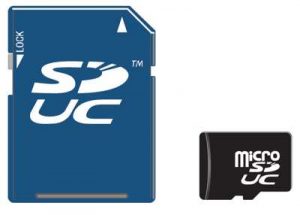
The PCIe interface delivering a 985MB/s maximum data transfer rate and the NVMe upper layer protocol enables advanced memory access mechanism, enabling a new opportunities for the SD memory card. In addition, the maximum storage capacity in SD memory cards grows from 2TB with SDXC to 128TB with the SD Ultra Capacity (SDUC) card. These innovations maintain the SDA’s commitment to backward compatibility and are part of the SD 7.0 specification.
Click to enlarge
“SD Express’ use of popular PCIe and NVMe interfaces to deliver faster transfer speeds is a savvy choice since both protocols are widely used in the industry today and creates a compelling choice for devices of all types,” said Mats Larsson, senior market analyst, Futuresource Consulting. “The SD Association has a robust ecosystem with a strong history of integrating SD innovations and has earned the trust of consumers around the world.“
SD Express keeps pace with growing performance levels of mobile and client computing, imaging and automotive as they adopt faster communication and embedded storage protocols designed to make processing data faster.
Click to enlarge
“With SD Express we’re offering an entirely new level of memory card with faster protocols turning cards into a removable SSD,” said Hiroyuki Sakamoto, president, SDA. “SD 7.0 delivers revolutionary innovations to anticipate the needs of forthcoming devices and content rich and speed hungry applications.“
“PCI-SIG is pleased to have teamed with the SDA to collaborate on this innovation for the world’s leading removable memory card – SD,” said Al Yanes, president and chairman, PCI-SIG. “PCIe specification conformance tests are available today by major test vendors, offering a significant advantage for any new PCIe adopter.“
SD Express delivers speeds necessary to move large amounts of data generated by data-intense wireless communication, slow motion video, RAW continuous burst mode and 8K video capture and playback, 360° cameras/videos, speed hungry applications running on cards and mobile computing devices, ever evolving gaming systems, multi-channel IoT devices and automotive.
SD Express will be initially offered on SDUC, SDXC and SDHC memory cards.
“NVMe is the industry-recognized performance SSD interface from the client to the datacenter, shipping in millions of units,” said Amber Huffman, president, NVM Express, Inc. “Consumers will benefit by SD Association adopting the NVMe specification for their new SD Express cards.“
SD Express memory card examples
SD Express uses the PCIe 3.0 specification and NVMe v1.3 protocols defined by PCI-SIG and NVM Express, respectively, on the second row of pins used by UHS-II cards today. By relying on protocols already in the marketplace, the SDA gives the industry an advantage allowing utilization of existing test equipment and saving in development process by usage of existing building blocks used in existing designs. These cards also provide system developers new options offered by PCIe and NVMe capabilities, such as Bus Mastering, Multi Queue (without locking mechanism) and Host Memory Buffer.
The SDA released visual marks to denote SD Express and SDUC memory cards for easy matching with devices’ recommendation for the best SD memory card for optimal performance.
Resource:
White paper SD Express Cards with PCIe and NVMe Interfaces provides details on the capabilities and features found in the SD 7.0 specification.








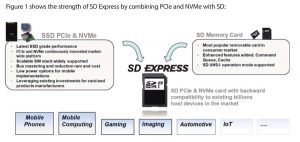
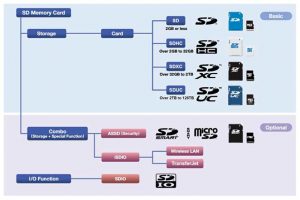
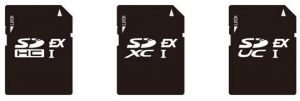
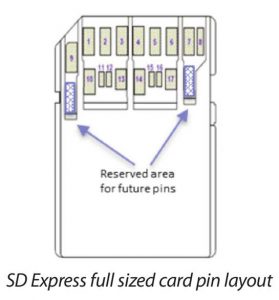




 Subscribe to our free daily newsletter
Subscribe to our free daily newsletter
